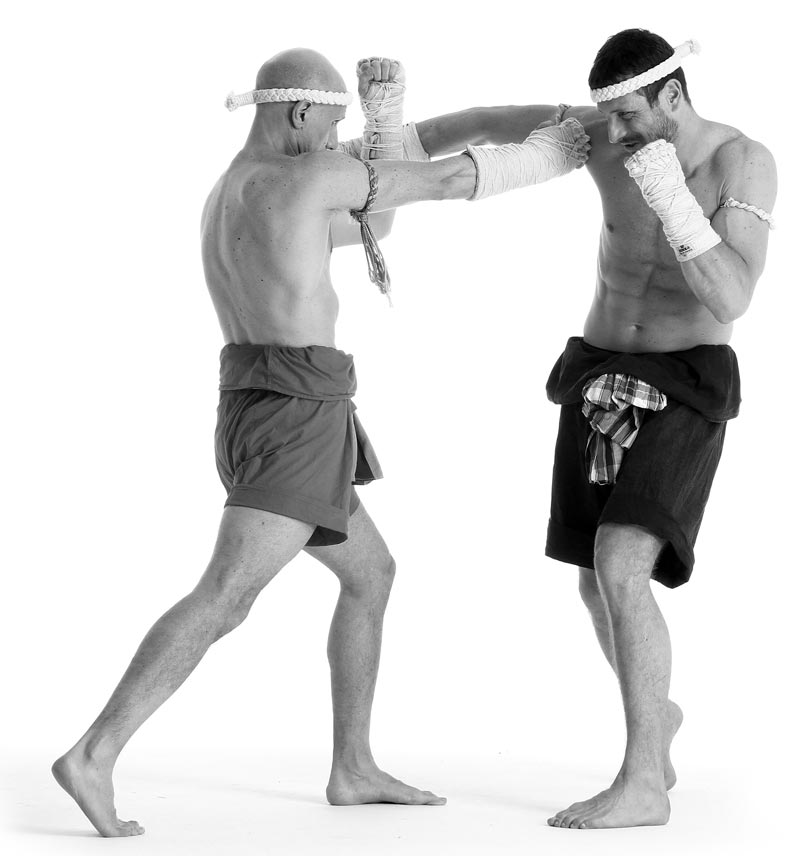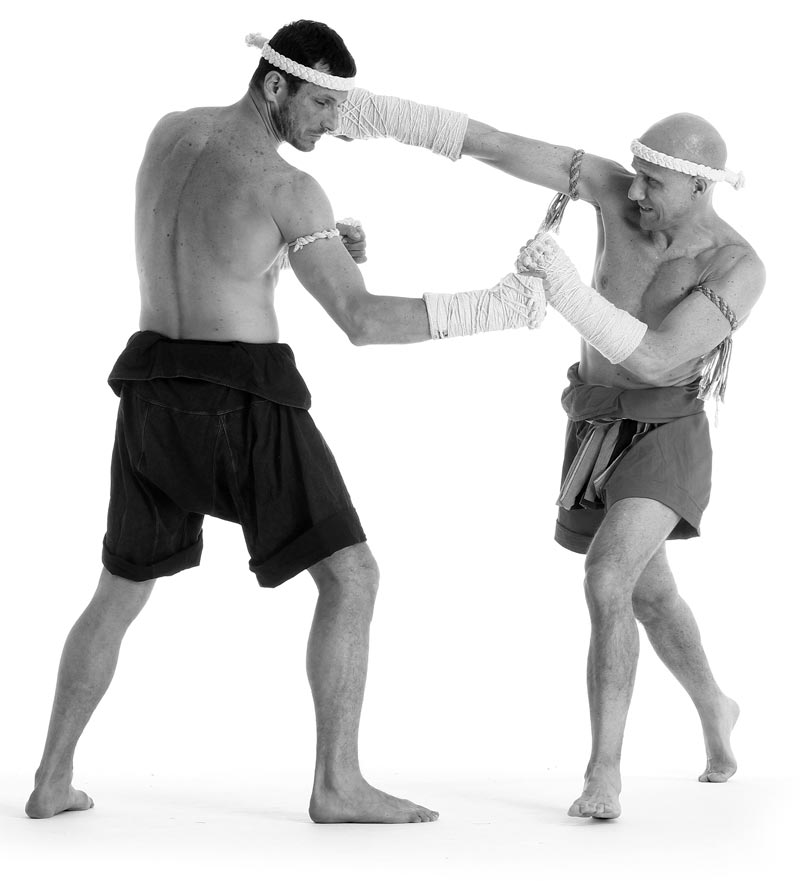Muay Korat
The first patriarch of Muay Korat was Phra Hensamahan, he encrypted the most articulate and coherent form of this style whose origins can be traced back to the ancient traditions of South East Asia. It’s told that the source of his style came from martial techniques developed in ancient Cambodia during the Khmer’s reign: according to our studies the origin of Muay Khorat would be from the mythical Martial Arts of Angkor Wat, seat of the ancient capital of the Khmer Empire; whose culture strongly influenced the inhabitants in the Khorat area.
The development of this style occurred in four periods: the first going from the reign of Rama I until the reign of Rama IV.

Typical Techniques:
The first characteristic was hand-binding: in this style raw cotton ropes wrapped the fists and the arms up to the elbows; these were not in fact body weapons in which Korat boxers were specialized. The wrapping also worked as protection for the forearms in case they were struck by the powerful circular kicks typical of this style. The wide circular punches were feared for their devastating power, from which their name Mahd Wiang Kwai or “Throwing the Buffalo” Punch arises. The perfect complement to the wide swing are straight punches which in the Korat are performed, to the contrary of other Muay styles and of Modern Western Boxing, with the fist held vertically, using the raised arm which acts like a piston (exactly the same methodology used by Western Bare Knuckle Boxers).
The development of this style occurred in four periods: the first going from the reign of Rama I until the reign of Rama IV.

Typical Techniques:
The first characteristic was hand-binding: in this style raw cotton ropes wrapped the fists and the arms up to the elbows; these were not in fact body weapons in which Korat boxers were specialized. The wrapping also worked as protection for the forearms in case they were struck by the powerful circular kicks typical of this style. The wide circular punches were feared for their devastating power, from which their name Mahd Wiang Kwai or “Throwing the Buffalo” Punch arises. The perfect complement to the wide swing are straight punches which in the Korat are performed, to the contrary of other Muay styles and of Modern Western Boxing, with the fist held vertically, using the raised arm which acts like a piston (exactly the same methodology used by Western Bare Knuckle Boxers).
The straight punch with vertical fist offers more solidity at the level of the wrist and a better alignment of the forearm bones which can be used to crush or raise the fists of opponents creating a sort of bridge which can be used as a lever on the attacking arm.
Another technique that was characteristic of this style were Tae Wiang or roundhouse kicks,( the training for which involved strking banana tree trunks over a long period of time), which reach the target with exceptional force using, like circular punches, the complete rotation of the hips to generate an enormous impact upon the opponent like a door violently slamming shut (called in Thai, Long Dan Pratoo). It is said that this way of kicking was probably inspired by the relaxed but powerful movement of an elephant’s trunk.
Another action typical of this style is the neck hold which works like a vise to suffocate and hold whilst rapid knee strikes connect to the body and face of the adversary (Chap Ko Ti Kao, made famous in modern times by the famous champion Diesel Noi).

Strong points:
The use of hands, shins and knees is hightly developed both for offense and for erecting an impenetrabile barrier against the adversary’s attacks, the blows have a devastating power, they are efficient from any distance, they can be learned in a relatively short time compared to soft techniques.
Another technique that was characteristic of this style were Tae Wiang or roundhouse kicks,( the training for which involved strking banana tree trunks over a long period of time), which reach the target with exceptional force using, like circular punches, the complete rotation of the hips to generate an enormous impact upon the opponent like a door violently slamming shut (called in Thai, Long Dan Pratoo). It is said that this way of kicking was probably inspired by the relaxed but powerful movement of an elephant’s trunk.
Another action typical of this style is the neck hold which works like a vise to suffocate and hold whilst rapid knee strikes connect to the body and face of the adversary (Chap Ko Ti Kao, made famous in modern times by the famous champion Diesel Noi).

Strong points:
The use of hands, shins and knees is hightly developed both for offense and for erecting an impenetrabile barrier against the adversary’s attacks, the blows have a devastating power, they are efficient from any distance, they can be learned in a relatively short time compared to soft techniques.
Weak points:
The blows are quite predictable, there is greater energy loss during the strikes, a high level of bone conditioning is necessary, and they are based on having good physical shape in order to be efficient.

